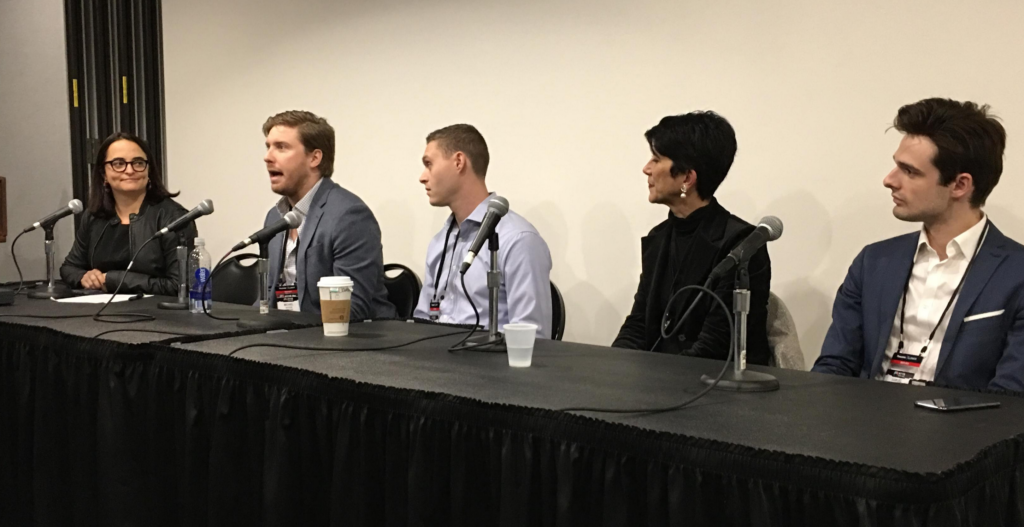M+E Daily

VR Making Strides but Continues to Face Challenges
Story Highlights
NEW YORK — Virtual Reality (VR) continues to make advances when it comes to investment dollars and hardware innovation, but the technology continues to face challenges and still lags behind augmented reality (AR) when it comes to consumer interest, according to executives at Google and other companies in the VR and augmented reality (AR) sector, as well as industry experts, who spoke at the NY VR Expo Oct. 26.
Challenges that VR still faces include consumer confusion about what VR devices can be used for, hardware form factors still not being appealing enough to many consumers, and a lack of awareness at companies who could be using virtual advertising to promote their brands, speakers at two of the day’s conference sessions said.
“It’s incredible to see the level of investment that has been made into this entire ecosystem” and the dollars that have been raised by VR startups despite the fact that we are “still at this very early stage,” Aaron Luber, who leads Google’s AR/VR content partnerships and business development, said during an AR “fireside chat” with AR/VR consultant Charlie Fink.
Right now, there are a lot of “great things that are happening” in the technology industry, including advancements in artificial intelligence (AI) and machine learning, Luber said. A lot of what’s happening isn’t exactly new, but “they’re just being supercharged at this amazing moment in time where machine learning, AI and a lot of things are all coming together,” he noted.
Agreeing, Fink said: “It is kind of incredible how fast things keep accelerating” in the tech sector. Facebook-owned Oculus VR has invested a significant amount of money in VR content and a lot of the content is strong, he said.
 But Fink added: “Right now — this week — AR is hot, and VR is not so hot, even though” VR hardware pricing has declined from a year ago and there are a growing number of VR headsets that allow users to be “untethered” from computers. “No one is buying” VR headsets — relatively speaking anyway, despite “industry propaganda” to the contrary, according to Fink. For the sake of comparison, he pointed out that while 1 million Oculus Go devices were expected to be sold in 12 months, 12 million Nintendo Switch video game systems were expected to be sold in a shorter amount of time.
But Fink added: “Right now — this week — AR is hot, and VR is not so hot, even though” VR hardware pricing has declined from a year ago and there are a growing number of VR headsets that allow users to be “untethered” from computers. “No one is buying” VR headsets — relatively speaking anyway, despite “industry propaganda” to the contrary, according to Fink. For the sake of comparison, he pointed out that while 1 million Oculus Go devices were expected to be sold in 12 months, 12 million Nintendo Switch video game systems were expected to be sold in a shorter amount of time.
A major challenge facing VR hardware is that consumers are “confused about what it is for,” Fink said.
Luber countered that an “incredible breakthrough” has been made in the VR space. But he conceded: “VR is still at a challenging stage where the hardware is getting to a point where it needs to be the right form factor — it needs to fit the right way, it needs to feel the right way.”
But companies including Google and Facebook are all making the types of investments and creating the type of “innovation” that need to be done to drive VR to success, according to Luber, who said they are “laying the groundwork for what’s going to come for years from now.”
 During a panel session that followed on virtual advertising, Tracy Quitasol managing director at media communications agency OMD USA, pointed out that challenges she’s faced in the past when dealing with VR included not being able to get enough headsets for clients to see VR experiences created to promote their brands.
During a panel session that followed on virtual advertising, Tracy Quitasol managing director at media communications agency OMD USA, pointed out that challenges she’s faced in the past when dealing with VR included not being able to get enough headsets for clients to see VR experiences created to promote their brands.
It’s also been challenging to get at least some traditional advertisers “over the hump” when it comes to convincing them to use VR in ads because it’s hard to communicate, in language they understand, advantages that the technology provides, she said.
Meanwhile, although “you can get a ton of scale through mobile devices” for VR content, “in order to get the highest level of engagement” and “the most immersion” to truly capture the attention of viewers, you really need to focus on 360-degree, 3D content rather than 2D, Jared Goodman, Google AR/VR commercialization lead, said. There are is also a “huge opportunity” provided by the use of AR in advertising to create exclusive elements, he pointed out.









